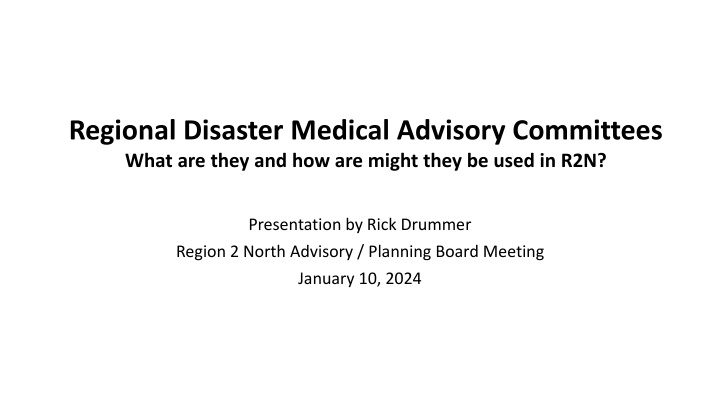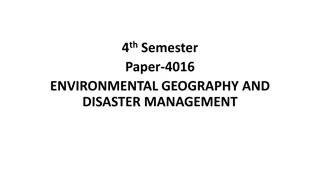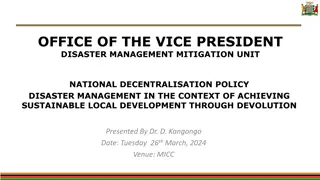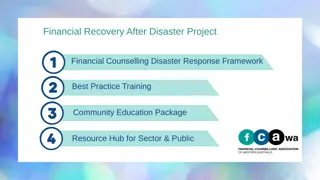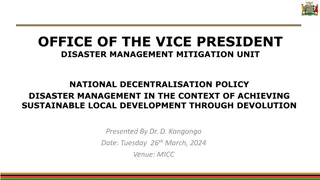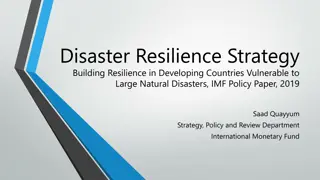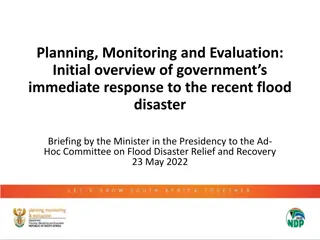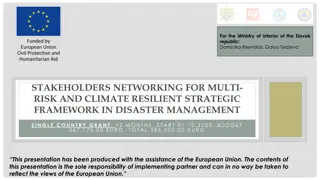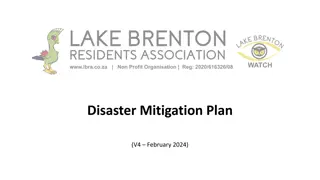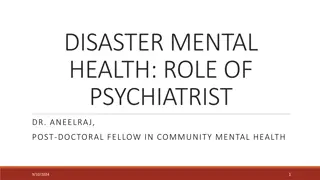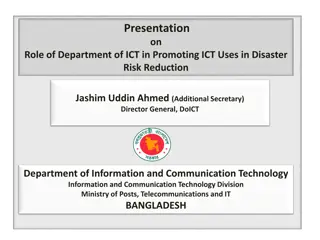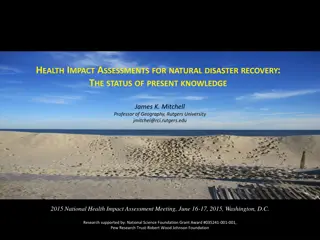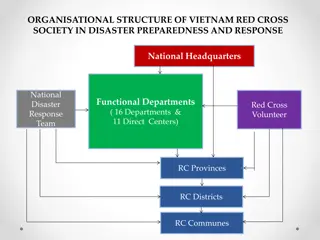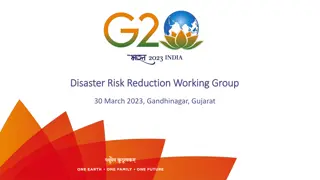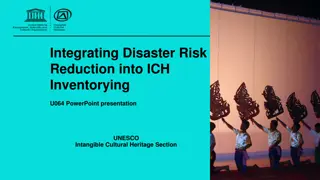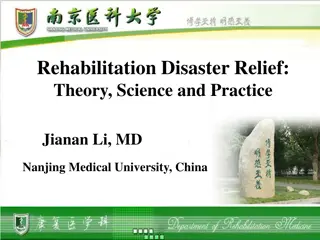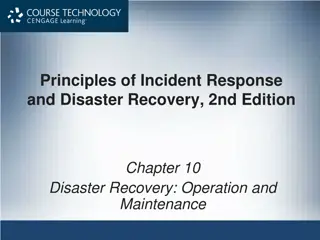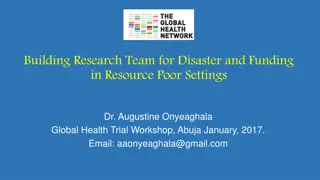Regional Disaster Medical Advisory Committees
Regional Disaster Medical Advisory Committees (RDMACs) play a crucial role in providing situational awareness, decision support for crisis standards of care, and coordination during major incidents. They work with local health departments to develop guidelines for scarce resource allocation, prioritize resources, and enhance preparedness. Membership in RDMAC requires expertise in emergency response, public health, medical care, bioethics, law, and disaster mental health.
Download Presentation

Please find below an Image/Link to download the presentation.
The content on the website is provided AS IS for your information and personal use only. It may not be sold, licensed, or shared on other websites without obtaining consent from the author.If you encounter any issues during the download, it is possible that the publisher has removed the file from their server.
You are allowed to download the files provided on this website for personal or commercial use, subject to the condition that they are used lawfully. All files are the property of their respective owners.
The content on the website is provided AS IS for your information and personal use only. It may not be sold, licensed, or shared on other websites without obtaining consent from the author.
E N D
Presentation Transcript
Regional Disaster Medical Advisory Committees What are they and how are might they be used in R2N? Presentation by Rick Drummer Region 2 North Advisory / Planning Board Meeting January 10, 2024
Regional Disaster Medical Advisory Committees During major incidents, Regional Health Care Coalitions may develop Regional Disaster Medical Advisory Committees (RDMAC). Membership in the RDMAC would depend on the specific medical needs determined by the actual incident. The RDMAC could help with situational awareness and decision support for crisis standards of care decisions or recommendations. The committee could be developed in conjunction with the State Disaster Medical Advisory Committee (SDMAC). 1/10/24 2
Michigan Crisis Standards of Care Guidelines State: When an emergency or disaster that may lead to scarcity is imminent, local agencies should convene their RDMACs to assess the nature of this scarcity within the HCC, and to the extent possible, in surrounding agencies and organizations integral to providing access to health care. 1/10/24 3
RDMACs serve several functions: Work with the local public health department to develop guidelines for crisis standards of care and scarce resource allocation applicable to the issues and capacities relevant at the local and regional levels, yet consistent with the State Guidelines and additional guidance of the State Disaster Medical Advisory Committee (SDMAC) Provide specific guidance to health agencies and organizations on how to prioritize specific scarce resource during an emergency or disaster that impacts public health. Serve an important coordination function between local agencies/organizations and provide a link between the SDMAC and these local agencies. Develop training and assessment materials to improve preparedness, education, and process for making decisions about allocation of scarce resources. 1/10/24 4
RDMAC members should have adequate expertise and training, as well as a clear link to state produced materials and deliberations. The RDMAC should include members knowledgeable in: Emergency Response Public Health Medical Care Bioethics Law Disaster Mental health 1/10/24 5
The RDMAC should include members who represent: Regional Healthcare Coalitions Medical Control Authorities Hospital Leadership Public Health Behavioral Health Specialists related to the event (infectious disease, burns, pediatrics, etc.) Long Term Care (Skilled Nursing Facilities, Adult Foster Care Homes, Homes for the Aged, etc.) Emergency Management 1/10/24 6
Regions might consider indicators and triggers to activate the RDMAC: Disruption of facility or community infrastructure and function (e.g., utility or system failure in health care organizations, more than one hospital affected in the region, shortage of EMS staffing/ambulance availability) Failure of hospital contingency surge capacity Availability of material resources like medical supplies, medications, etc. Availability of space for patient care Pandemic phase/impact Shortage of specific equipment (ventilators) or of medications that have no substitute Many more 1/10/24 7
The RDMAC will direct the relevant emergency planning committees to: Identify resources which are likely to become scarce Develop a method (or implement a previously developed method) for tracking such resources Establish trigger points which indicate when conservation of a particular resource(s) is necessary 1/10/24 8
RDMAC in R2N Starts with R2N Staff and Medical Director R2N RMCC activation Meetings with partners specific to the incident Invite the people needed for information sharing, decision making, action, etc. CHECC guidance from the State Collaboration with other organizations specific to the incident State Burn Coordinating Center Infectious Disease, Epidemiologist, Labs, etc. Collaboration with Healthcare Facilities what guidance/support do they need? 1/10/24 9
RDMAC Examples in R2N H1N1 SNS delivery and distribution Meningitis Outbreak in R2S COVID-19 Many meetings PPE information and distribution Ventilators Patient movement Fatality Management Suburban Collection Showplace MEDDRUN medications 1/10/24 10
1/10/24 11
For access to the Michigan Guidelines for Implementation of Crisis Standards of Care and Ethical Allocation of Scarce Medical Resources During Emergencies and Disasters please visit: MDHHS Ethical Guidelines (michigan.gov) 1/10/24 12
